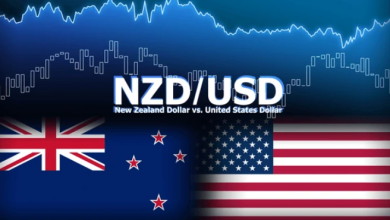- USD/CHF extends its decline as the US Dollar weakens amid escalating concerns over the potential economic impact of US-imposed tariffs.
- The DXY has dropped more than 1%, while the yield on 2-year US Treasury bonds has also declined over 1%.
- The Swiss Franc gains strength as intensifying US-China trade tensions stoke recession fears and boost demand for safe-haven assets.
The USD/CHF pair dropped to 0.8069 during Monday’s Asian session, marking its lowest level since September 2011, and is trading around 0.8090. The US Dollar (USD) remains under pressure, weighed down by growing fears of economic fallout from the recently imposed US tariffs.
The US Dollar Index (DXY), which tracks the Greenback against a basket of six major currencies, has fallen over 1% to around 98.30—its weakest level since April 2022. Adding to the pressure, the yield on 2-year US Treasury bonds slid more than 1%, now hovering at 3.75%, reflecting investor caution.
Federal Reserve (Fed) Chair Jerome Powell has warned that the combination of a slowing economy and persistent inflation could challenge the Fed’s goals and heighten the risk of stagflation. Political tension adds another layer of uncertainty, with reports on Thursday indicating President Trump’s growing dissatisfaction with Powell, reportedly even considering his removal. While markets showed little initial reaction, White House economic adviser Kevin Hassett confirmed that the option is being explored.
Swiss markets are closed for the Easter Monday holiday. However, the Swiss Franc (CHF) has strengthened as rising US-China trade tensions increase recession fears and drive demand for safe-haven assets. Meanwhile, President Trump has exempted key tech products—many manufactured in China—from proposed reciprocal tariffs.
Despite this, tensions persist. The White House has imposed new tariffs on Chinese ships docking at US ports, potentially disrupting global shipping lanes. Still, Trump struck a more conciliatory tone late Thursday, noting that China had made several concessions and expressed optimism about reaching a trade deal within three to four weeks. “I don’t want to go higher on China tariffs,” he said. “If China tariffs go higher, people won’t buy.”





